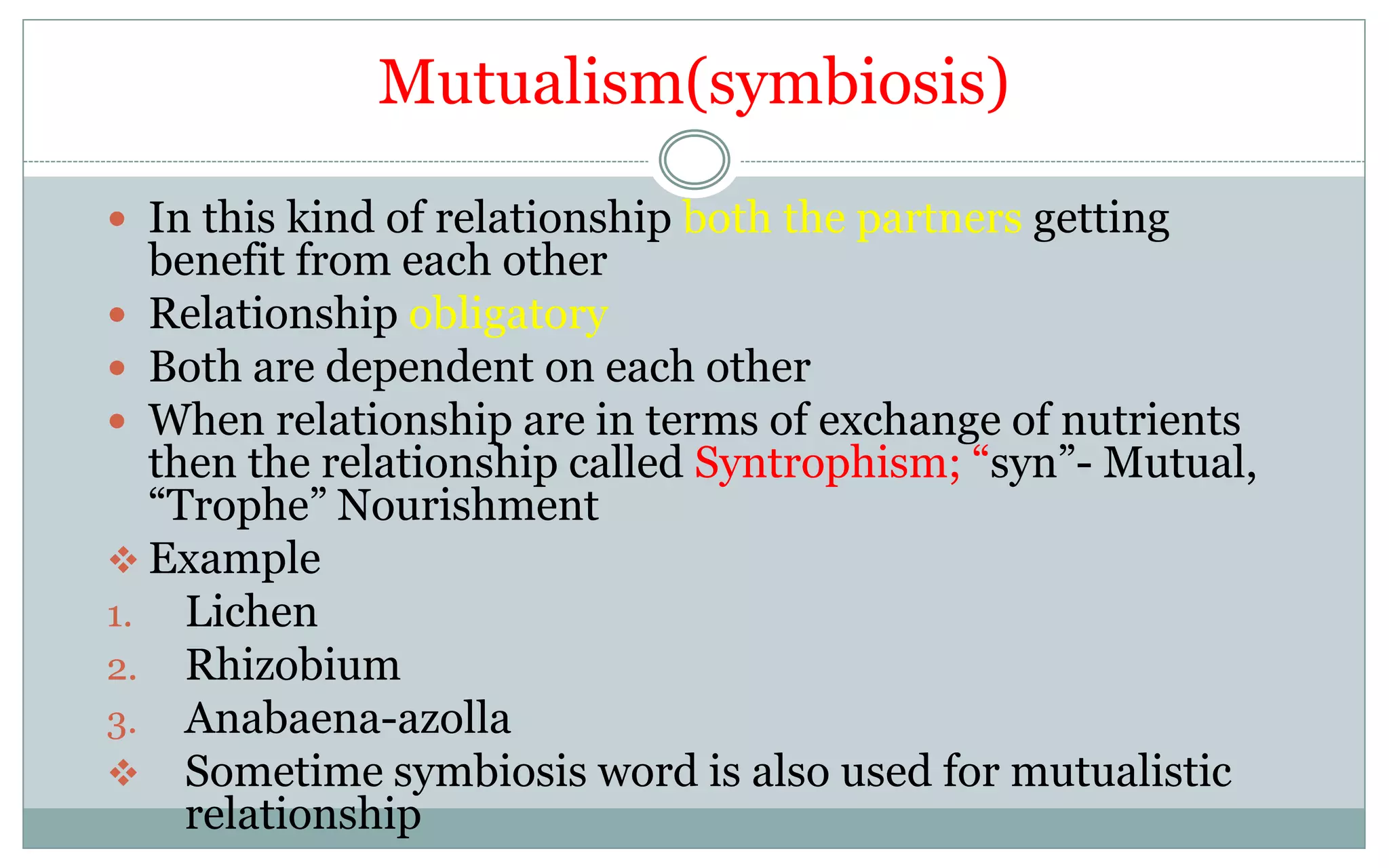The document discusses the microbial flora found in soil. It describes the five major groups of microorganisms present: bacteria, fungi, algae, protozoa, and viruses. Bacteria are the most abundant and diverse, with billions in each gram of soil, while fungi and algae also play important roles in decomposition and nutrient cycling. Protozoa help regulate bacterial populations by ingesting them. Overall, the complex microbial communities in soil are crucial for soil health and plant growth.




















































![Commensalisms
Commensalism [Latin com, together, and mensa, table]
One organism depends on the table scraps of other
In this association one organism/partner get benefit
from another partner without affecting it.
Does not get benefit nor negatively affected by the action
of second population
Not obligate](https://image.slidesharecdn.com/soilmicrobiology-170715051217/75/Soil-microbiology-53-2048.jpg)

















































































